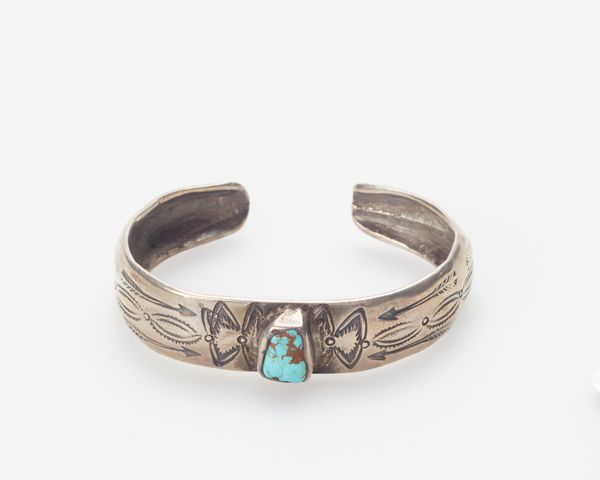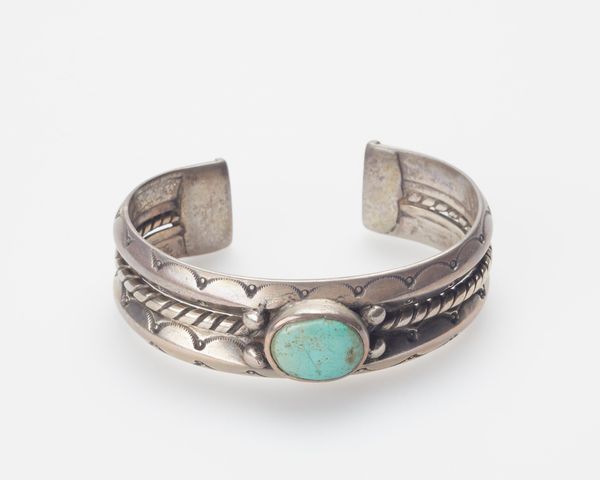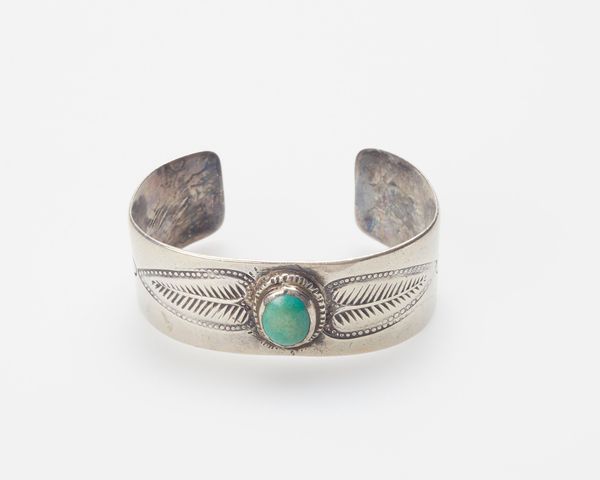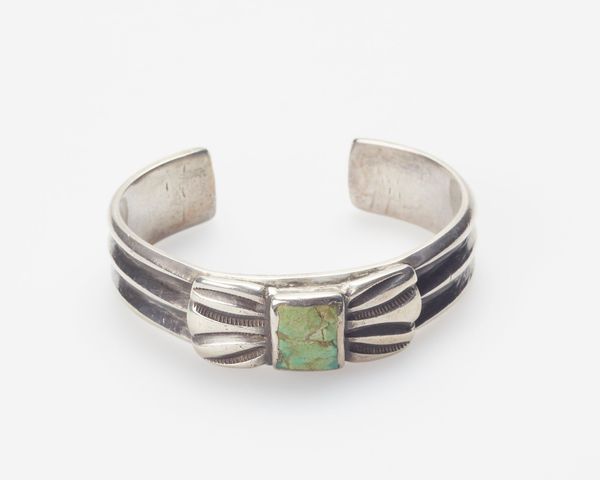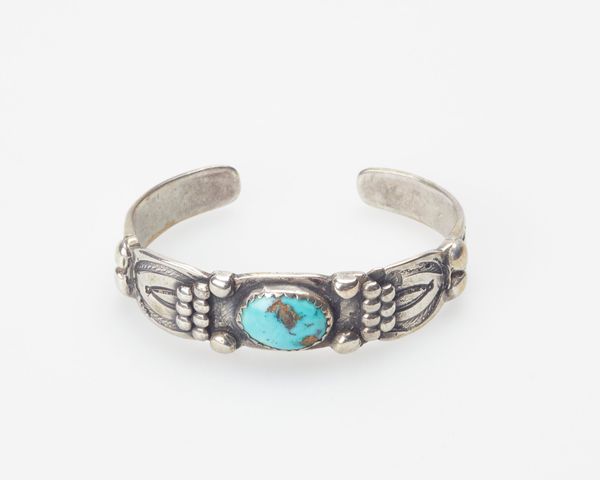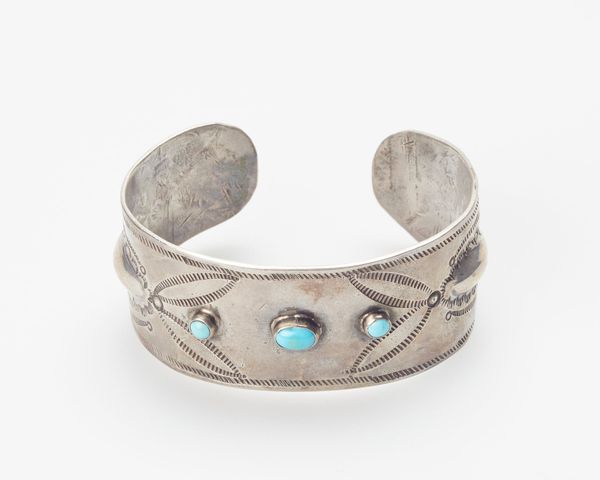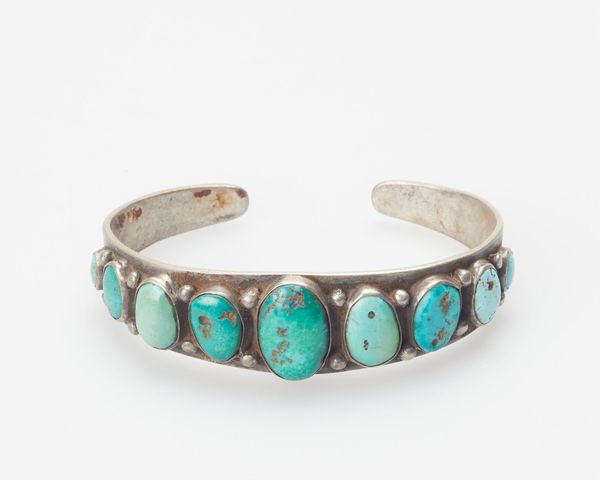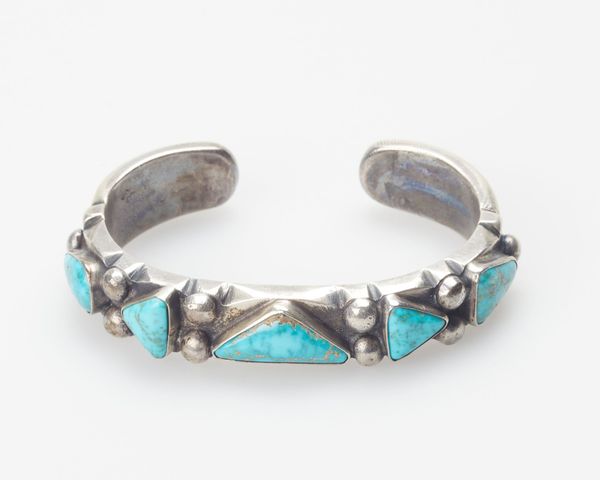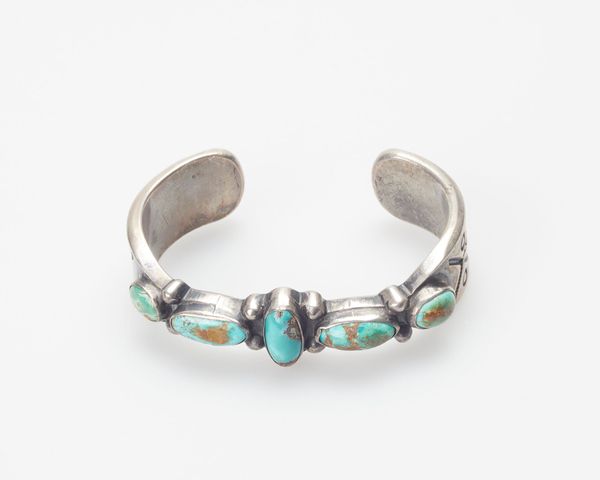
silver, metal
#
silver
#
metal
#
indigenous-americas
Dimensions: 2 5/16 x 1/2 x 1/2 in. (5.87 x 1.27 x 1.27 cm)
Copyright: Public Domain
Curator: I'm struck by the immediate tranquility radiating from this piece, a bracelet crafted by a Navajo (Diné) artist around 1900. Its central turquoise stone is cradled in silver. I get a profound sense of enduring cultural expression. Editor: Yes, enduring! The Minneapolis Institute of Art holds this piece. You immediately notice the striking contrast, that vibrant, almost pulsating turquoise against the muted silver of the cuff. It's earthy and ethereal simultaneously. Curator: It's funny, isn’t it? That combination of metal and stone, suggesting something so strong, a bond with the Earth, a flow to the heavens... These Indigenous silverworks have always fascinated me because of their relationship to colonial trade routes. We often see smithing integrated into cultural exchange. The piece itself, though seemingly simple, echoes stories of complex contact, doesn’t it? Editor: Absolutely. It's a tangible representation of shifting economies and persistent identities. Those etched details along the cuff; tiny symbols are arranged rhythmically. Do you read something into their patterns, beyond surface decoration? Curator: To be honest, looking at the composition here...there's such simplicity. Yet these design elements feel almost like a visual mantra—simple lines combined with focused intent, a testament of belief. I get the feeling that I’m in contact with something quite ancient. It’s quite amazing how artists were creating beauty like this out of often dire political circumstances. It asks you to really consider its place. Editor: I agree entirely; you can definitely interpret it through several angles. And the placement too. As a personal object, meant to be worn on the body, I like imagining how this bracelet moved through the world, accumulating stories just by existing. A small thing, and also such a giant symbol. Curator: So true, that is the most profound aspect of viewing work like this, these treasures can give us direct evidence into a creative conversation centuries older than ourselves, and this particular one definitely holds all our interest! Editor: Here's to listening to that enduring voice across time. I'm all the richer for having thought with you on that note, an invitation to continue questioning the role of representation in public life, and its deep, long history.
Comments
No comments
Be the first to comment and join the conversation on the ultimate creative platform.
